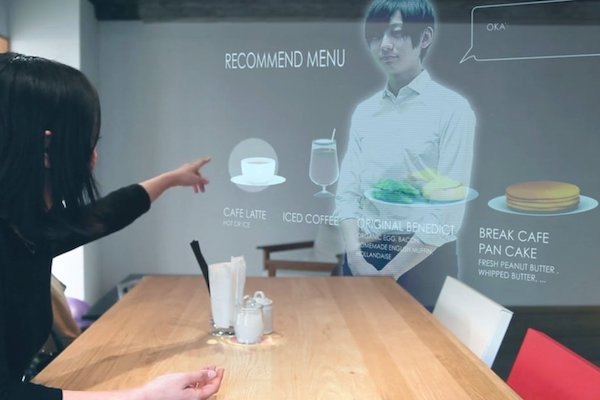Organizations of the Future - Part 4 - The Vision for the Restaurant of the Future

In part 1 we defined Digital Darwinism and the Coefficient of Adaptability , in part 2 we discussed the MTP , part 3 we deep dived into scenario planning, plausible futures and new entrants , and now we’re going to bring it together an envision the future of the restaurant.
Invest in the future of personalized nutrition, which resides in the future of the quantified self and future of food processing, manufacturing, and fulfillment.
Imagine a future where you could know everything about your body, including natural composition, but also real-time need state. Here’s a list of a few fast-moving trends that will enable that, all riding Moore’s law by doubling their price-performance every 9 to 18 months.
- Quantified Self:
- DNA sequencing & Microbiome. The understanding of our body’s DNA has been a long time human ambition. DNA sequencing started in the 1970’s, The Human Genome Project completed in 2003, and cost has fallen from $100M in 2001, to $10M in 2007, to less than $1,000 today, and over the next 7 years it will likely cost less than $10, and every person will have theirs. Our microbes outnumber human cells 10:1. Like the rainforest, the healthy human microbiome is a balanced ecosystem. Microbes perform essential functions such as digesting food and synthesizing vitamins. Studies have also linked the microbiome to human mood and behavior, as well as gut health, human development, and metabolic disorders. Real-time microbiome analysis will tell us exactly what our body needs.
- Tricoders. A portable, wireless device in the palm of your hand that monitors and diagnoses your health conditions. By 2017 we will have a device that will accurately diagnose 12 diseases independently of a health care worker or facility, and better than 10 combined certified board physicians, for less than $100 per device.
- Nanotechnology & Ingestible Computing. From DNA nanobots to ingestible computers - back in 2013 we were already experimenting with tiny pills with sensors and transmitters, allowing you to swallow them to monitor a range of health data and wirelessly share this information with a doctor. Just like everyone now is wearing their FitBit, Diabetics are monitoring their glucose, imagine soon we will have access to all our internal organism data, push it to the cloud, and decide how to share it or use it to maximize value.
- Manufacturing and fulfillment
- Additive Manufacturing / 3D Printing. This technology has been available since the 1960’s, and slowly growing at exponential rate. In recent years, part the knee of the curve, it’s been getting massive visibility, where now you could buy a 3rd printer for less than $100. There are companies already printing food, like Hershey’s or Natural Machines’ Foodini . The first 3d printed burger appeared in 2013 and costed $300k, but expect synthetic proteins to exponentially come down in price, and increase in quality and taste over the next 7 years.
- DNA editing / CRISPR. Modifying food, whether it’s vegetables and legumes, or livestock to provide better resistance to diseases, to change the vitamins, proteins, and nutritional components. RISPR gene edited cabbage grown and cooked for the first time already. In the future we may have an array of optimized natural food types, specifically engineered for certain nutrients and served by personalized need state.
- Autonomous Vehicles & Drones. Uber already testing autonomous vehicles in Pittsburgh , Google delivering food in campus, and Amazon Prime Air delivering within the hour. The way people transport themselves as well as goods will completely transform over the next 7 years.
Now let’s bring it all together. Imagine if you could know your body’s composition, precise need state, understand impact of vitamins, carbs, proteins, and know exactly what you should consume at the moment. Now imagine if you can take this data and choose to share it with a food or service provider that can read it, understand it, and pick from a set of food that was pre-engineered for that specific need, or furthermore, manufacture it in real time just for you. After the food is made for you in real time, now imagine if you could pick it up at a restaurant, or a kiosk available at thousands of locations, or get it delivered within the hour, or print it directly in your home or office.
The future of the Food Service Provider industry integrates the future of personalized nutrition and future of food processing, manufacturing, and fulfillment.
The slowest aspect in any innovation is not technology, but cultural acceptance. Society has been moving towards organic food under a factual belief that it’s better for us, but we’ll soon understand that genetically edited food and manufactured food will have the ability to be better, healthier, cheaper, and more convenient.
In the last article, we’ll explore innovation portfolio management, innovation strategy, and internal organizational structures, design, operational models, and culture to maximize the Coefficient of Adaptability.